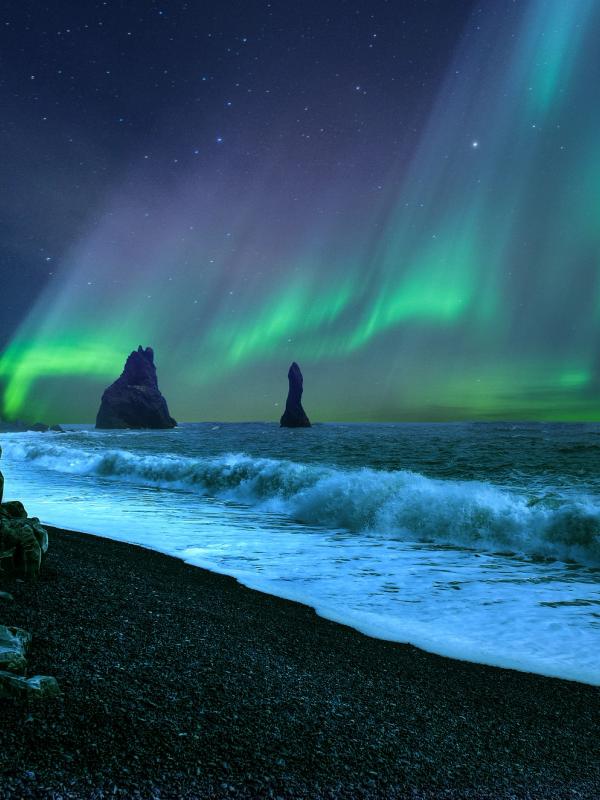
What You Need to Know Before Traveling to Iceland
Thinking about undertaking a trip to Iceland? Congratulations! This is a country of extraordinary adventure, home to mind-boggling landscapes, a fascinating culture, and unique travel experiences. But before you set foot on this volcanic island in the far-flung northern Atlantic, there are a few important things you should know to make the most of your visit.
In this comprehensive guide to Iceland, we'll cover everything you need to know before visiting Iceland. From weather and safety to local customs and must-see attractions, let’s get started.
1. Understanding Iceland's Unique Appeal
Iceland, often referred to as the "Land of Fire and Ice," offers a unique travel experience. This Nordic island is known for its stunning natural landscapes, including volcanoes, glaciers, hot springs, and dramatic coastlines. For most people, this is the main reason for visiting Iceland; to get a taste of its epic nature.
But its extraordinary geology isn’t all that Iceland has to offer. It also boasts a rich cultural heritage, with a vibrant arts scene, fascinating folklore, and a warm and welcoming population. Whether you're an outdoor enthusiast, a history buff, or an art lover, Iceland has something for everyone.
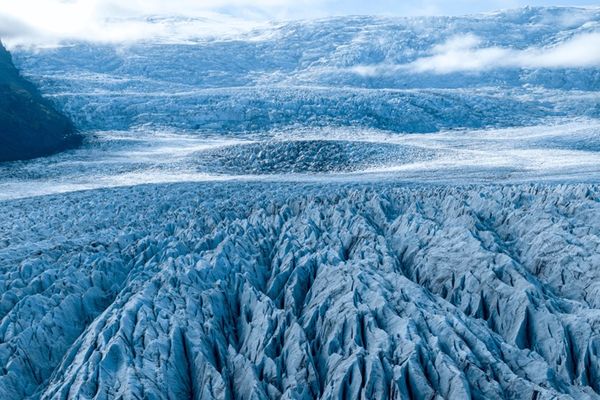
2. Climate and Weather
Understanding Iceland's climate and weather patterns is crucial for planning your trip. Despite its name, Iceland enjoys a milder climate than its Arctic location suggests. It is still subject to rapid weather changes, so being prepared is essential.
Iceland experiences four distinct seasons, each offering its own unique charm. Summers are mild with long daylight hours and the midnight sun. Winters bring colder temperatures, shorter days, snow and icy roads, but the chance of seeing the northern lights. Spring and autumn can be unpredictable, with fluctuating temperatures and changing landscapes.
When you come to Iceland is one of the biggest decisions you’ll make. For more information, dive into our detailed guide about the best time to visit Iceland.
3. Getting Around in a Campervan
When it comes to exploring Iceland, there are, of course, several transportation options. We might have a bias, but we believe that renting a campervan is the absolute best way to experience Iceland. With plenty of flexibility and a wide choice of campsites to choose from, you’ll spend most of your time out exploring Iceland – which is what trips here are all about. Iceland's Ring Road goes around the island and lets you visit many main attractions, making it great for road trips.
Add campsites in remote places, local swimming pools, and plenty of chances to explore during the long daylight hours, and you can start to see why campervan travel in Iceland is a great idea.
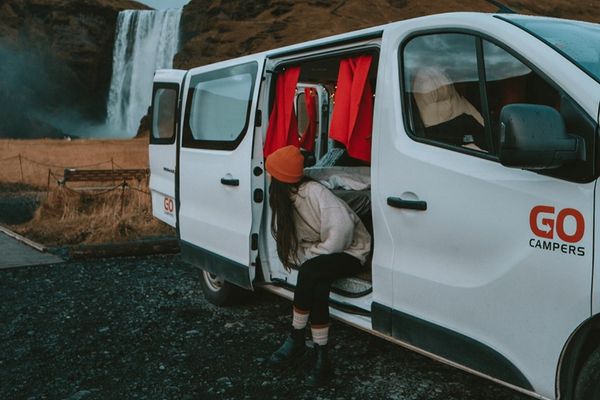
4. Safety Considerations
Iceland's natural beauty can be awe-inspiring, but it's important to respect the nature here and take necessary safety precautions. The country's diverse landscapes, from volcanoes to glaciers, can present potential hazards. It's crucial to stay informed about weather conditions, road closures, and safety guidelines. Additionally, familiarize yourself with emergency services and follow the advice of local authorities.
For the most part, campervan travelers can get by with paying attention to any weather warnings (posted on Safe Travel as well as the Icelandic Met Office websites) and the road conditions (posted on the Icelandic Roads and Coastal Administration website). With recent eruptions occurring on the Reykjanes Peninsula, the chance of earthquakes in that region is also elevated.
5. Accommodation Options in Iceland
Iceland offers a wide range of accommodation options to suit every traveler's preference and budget. There are luxury hotels, budget hostels and guesthouses, and of course, plenty of campsites where you can park your campervan. With tourism skyrocketing in recent years, so have prices. But that makes campervan travel so much more attractive – you’re combining your vehicle rental and accommodation costs into one. All that’s left to do is find a campsite for the night.
Luckily, Iceland is loaded with campsites, covering every corner of the country. From central campsites in the towns and villages to remote campsites that immerse you in Iceland’s natural beauty, it’s one of the best ways to experience Iceland. It’s important to note that many campsites in Iceland are only open for the summer season (check out our campsite maps for more information on that). You should also know that some are included as a part of the Iceland Camping Card scheme (to find out whether it’s worth buying for your trip, check out this article!).
6. Reykjavík – Iceland’s Compact Capital
Reykjavík is Iceland’s capital city, the cosmopolitan hub nestled in the southwest of the country where everything happens. Despite its small size, there’s a wealth of cultural attractions on offer here, including museums, art galleries, and landmarks. Taking a day or two to explore Reykjavik is recommended.
There are the charming streets of downtown, overflowing with shops, cafés, restaurants, and bars. Then, the iconic Hallgrímskirkja church and the city’s deservedly famous nightlife. Reykjavik also makes for a nice way to decompress after a long flight to Iceland or after a campervan trip around the country.
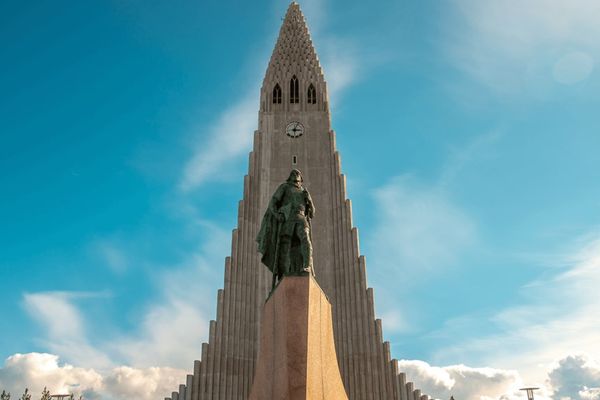
7. Must-See Natural Wonders
We’ve already mentioned that Iceland is mainly known for its natural wonders – no visit to the country is complete without visiting some of the iconic sites. From the Golden Circle, a popular region next to Reykjavik, to the remote Westfjords and Highlands, there are plenty of places to consider for your trip.
For most people, the waterfalls, black sand beaches, glaciers, and hot springs are the biggest draws. Waterfalls crash down cliffs in every corner of the country, and where glaciers lie, you’ll also find black sandy beaches created by lava flows from the volcanoes that reside under the ice.
Others might be interested in the volcanic energy brooding underground. Large and active volcanic zones sit directly underneath the country, flowing from the Reykjanes Peninsula through the Highlands up to the northern region around Lake Myvatn. In these zones, you’ll find plenty to see and do, from hiking up volcano rims to exploring spectral lava fields.
8. The Northern Lights in Iceland
The Northern Lights are, of course, another big reason why people look to Iceland as a potential travel destination. The country’s location near the Arctic Circle makes it an ideal spot for watching the aurora dance across the night skies. Add in some stupendous waterfalls, canyons, or lava fields below, and you can see why Iceland is fast becoming a fan favorite among northern light hunters.
The best time to see the Northern Lights in Iceland is during the winter months, from September to April when the nights are dark and clear. Some northern lights tours leave from the city, but with a campervan you’ll be out in the countryside each night, giving you a good chance to see them when you’ve finished exploring for the day.
While winter might seem like the best time to see the northern lights in Iceland, it’s also the country’s stormiest season. That might mean lots of cloud cover blocking the view; often, September/October and March/April offer better conditions for viewing the northern lights.
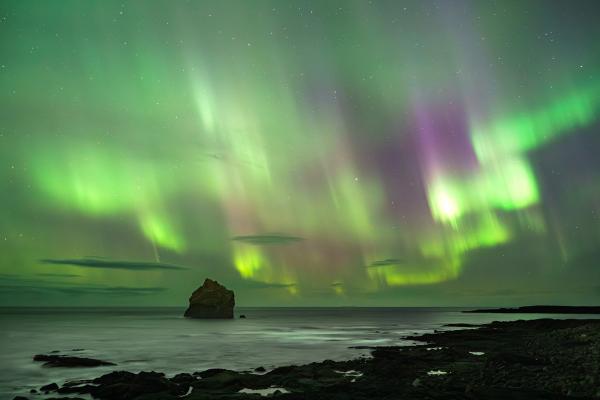
9. Experiencing Icelandic Culture
As we mentioned in the introduction, Iceland not only has stupendous landscapes, but it also boasts a rich and diverse culture. Influenced by its Nordic heritage and isolation from the rest of the world, Iceland has unique and interesting art, music, and literature. There are countless museums to discover the cultural heritage of the country, from the large and impressive ones in Reykjavik to the small and quirky ones in the small towns scattered around the country. And of course, don't forget to sample Icelandic cuisine, including local delicacies like fermented shark and traditional Icelandic lamb.
10. Responsible Tourism in Iceland
As tourism in Iceland continues to grow, it's essential to be a responsible traveler and lower your impact on the environment and local communities. Respect the fragile nature of Iceland's landscapes by staying on designated paths, following Leave No Trace principles, and avoiding littering. Support local businesses and opt for sustainable tourism options, such as eco-friendly accommodations and tours. Respect local customs and etiquette and be mindful of the country's cultural heritage.
Conclusion
Iceland has a lot to see and do, from amazing landscapes to a unique culture and many ways to explore. Planning ahead helps you get the most out of your trip, whether you're driving a campervan, checking out waterfalls, or hoping to catch the northern lights. Just be mindful of nature, follow local rules, and travel responsibly so Iceland stays just as special for everyone who visits.
